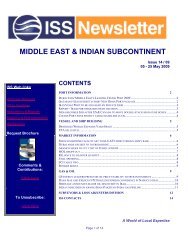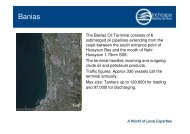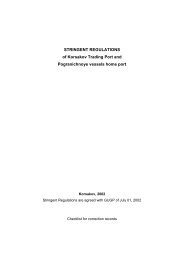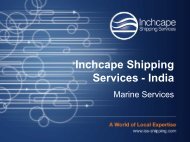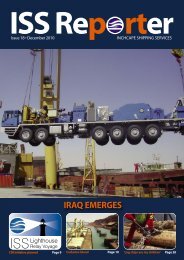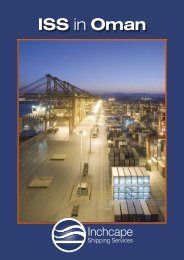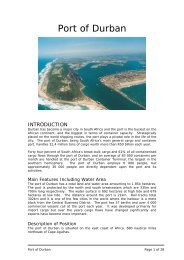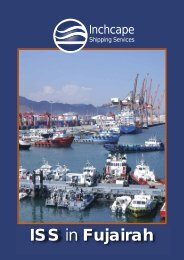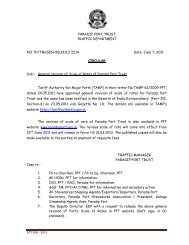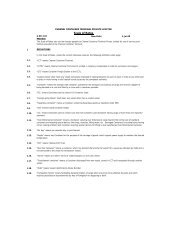Prigorodnoye Export Terminal Port Regulations.pdf - Inchcape ...
Prigorodnoye Export Terminal Port Regulations.pdf - Inchcape ...
Prigorodnoye Export Terminal Port Regulations.pdf - Inchcape ...
You also want an ePaper? Increase the reach of your titles
YUMPU automatically turns print PDFs into web optimized ePapers that Google loves.
<strong>Prigorodnoye</strong> <strong>Export</strong> <strong>Terminal</strong> <strong>Port</strong> <strong>Regulations</strong> Rev 01<br />
agreed between the ship and terminal in specific cases. Normally this is at five year<br />
intervals.<br />
• Test of electric/hard wire communications and ESD facility to be tested periodically.<br />
29 LNG Cargo Handling<br />
Cargo handling operations onboard vessels shall be performed in compliance with the requirements<br />
of the ship’s builders ”Cargo Operations Manual”.<br />
29.1 Normal Loading<br />
On completion of ESD tests <strong>Prigorodnoye</strong> Control Room, the Loading Master and the<br />
Responsible Ship’s Officer shall confirm that all systems are lined up and ready.<br />
29.2 Cooldown<br />
The Responsible Ship’s Officer in the tanker’s cargo control room (CCR) shall confirm that the<br />
ship's manifolds, liquid and vapour, are open and that they are ready to receive product.<br />
<strong>Prigorodnoye</strong> Control Room and the Loading Master shall confirm to the ship that the shore is<br />
ready to commence cooldown of the loading arms.<br />
Following the above confirmation, cooldown of all three liquid loading arms will commence.<br />
On completion of cooldown of the loading arms the flow rate will be adjusted according to the<br />
ships requirements for cooldown of ship's lines and tanks.<br />
The use of the vapour arm for vapour return to shore and control of ships cargo tank<br />
pressures is to be closely monitored at all times. Close liaison is required between ship and<br />
shore as the ship’s return gas blowers are ramped up during cooldown and increasing loading<br />
rate for increased vapour return to shore. Shore will lead all return vapour to the boil off gas<br />
(BOG) system for recovery and re-liquefaction. As such the rate of return gas to shore is to be<br />
adjusted slowly by ship, liaising with shore, to prevent overloading the shore system with the<br />
potential of a shore BOG system trip and diverting boil off gas to flare.<br />
Avoiding the use of the flare by careful return boil off gas vapour pressure management is to<br />
be pursued at all times. A careful management of cooldown rate and return boil off gas<br />
pressure will achieve full boil off gas re-liquefaction recovery with no environmental impact of<br />
flaring.<br />
For control of return gas from ship it is important that the <strong>Prigorodnoye</strong> Control Room is<br />
informed when the return gas compressor is started and stopped on the ship. Excessive<br />
return gas to shore must be avoided otherwise high pressure in shore tanks will cause the<br />
plant to trip. The starting of two compressors close together is prohibited unless pre arranged<br />
with <strong>Prigorodnoye</strong> Control Room and the vapour line is open to the flare. Ships are requested<br />
to increase return gas compressor slowly, as controllable, to maximum in a period of not less<br />
than 1 hour.<br />
During cooldown of the loading arms it is normal practice that ships will return vapour to shore<br />
without use of compressor i.e. freeflow. Ships must open the vapour control valve to shore<br />
0000-S-90-01-P-0207-00-E<br />
Page 55 of 101<br />
BM Code: EP.14.03.01.09



